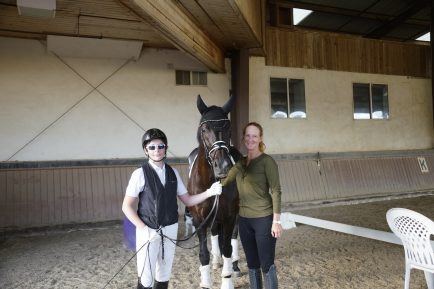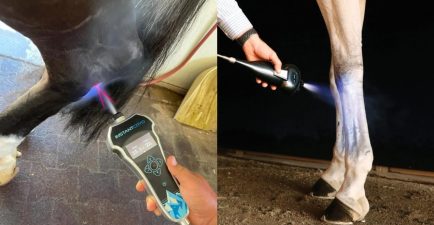What can you do with a yearling? What should you train horses at this age, and how much handling should they get used to? Here’s an overview of what you can expect when training and handling a yearling.
What is a yearling horse?
A yearling is a colt or filly (a young horse) between the ages of 1 and 2 years old, and as they approach their second birthday, they may also be referred to as “long yearlings.” These horses aren’t foals anymore, but they haven’t quite reached adolescence yet.
The official means of determining a horse’s age depends on its breed. Some breeds count a horse’s age from its birthdate, while other breed registries count age from January 1—meaning your horse could either turn “one” on its specific birth date or on New Year’s Day. If a horse’s age is counted from January 1, some breeders try plan for their mares to give birth as soon after this date as possible. This gives the maximum growing time for the foal before it turns old enough to work at age two.
Habits of Yearlings
Yearlings will most likely be fully weaned and independent of their mothers. They will be sleeping less and spend more of their resting time standing rather than lying down. Play is important at this time, as is interaction with other horses. Youngsters are very curious and enjoy mouthing anything they can find in their pastures or stalls. Play balls and other safe toys can satisfy their curiosity. Youngsters will play amongst themselves, play fighting, galloping, and bucking. They need room to move, so they can exercise and grow strong. This is also a time of rapid growth, so good nutrition is important. It is possible to overfeed a young horse, so care has to be taken not to encourage too rapid growth which can lead to joint problems. A youngster should be on the lean side, and not pleasantly plump.
Care is needed to keep colts separated from mares in heat. Some colts start showing an interest in mares at a very young age and some particularly precocious individuals may be able to breed a mare.
Although a colt is not technically reproductively mature until it is about 2-3 years old many a breeding accident has happened with a colt thought too young to be fertile. Gelding (castration) can be done as soon as the testes have descended into the scrotum.
If the prime reason for a horse’s existence is as a pleasure horse than the sooner gelding is done the better. Although some breeders may have reasons to geld later, for the average horse owner a young gelding may be much easier to deal with than a young stallion who is more interested in mares than paying mind to its handler.
During this time the young horse should continue learning to be obedient, to lead quietly, stand tied for grooming, vet, and farrier. Very short training sessions on the lunge line or in the round pen can begin. It is important that a young horse not be overworked to protect the joints in its legs and back. As the horse approaches its second year, it may learn to carry a bit and saddle. But a horse under the age of two should not carry any weight.
Short training periods to teach good ground manners while a horse is young will make the job of introducing the saddle and rider or harness and cart easier when the time comes.
Original article: What Can I Do with a Yearling? Expert Q&A (thesprucepets.com)
www.royalequestriancollection.com – check our website to purchase and enjoy our products for your horses and you.

























